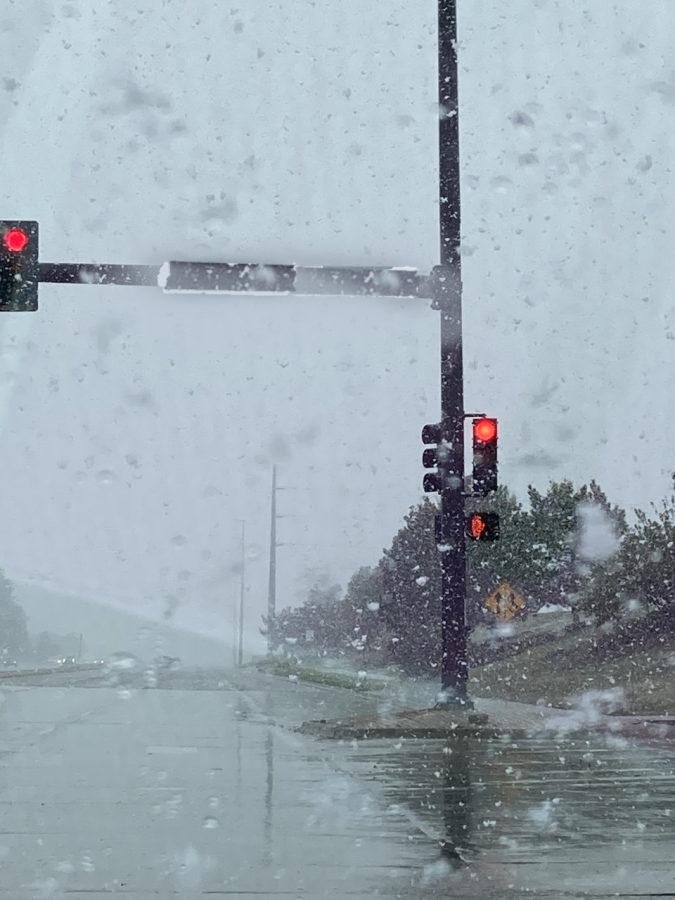Summer Depression (OPINION)
Most reading this at some point or another have felt an overwhelming sense of sadness, or despair. It’s a universalizing topic that lots of people deal with, and many can attribute this to a phenomenon called SAD, or seasonal depression.
Depression by itself is a rather common mental disorder, “with an estimated 3.8% of the population affected,” according to the World Health Organization. Many attribute seasonal depression to an, “affective disorder [that] occurs in climates where there is less sunlight at certain times of the year.” Although, according to Adam Kaplin, a Johns Hopkins psychiatrist, “In April, May and June, the suicide rate goes up and is the highest.”
Kaplin isn’t the only one who agrees with this theory. “According to the American College of Allergy, Asthma, & Immunology, about 50 million Americans suffer from allergies each year.” Though this might not be news to lots of people, “these changes are most pronounced in spring. Most importantly, these allergic symptoms are potent markers of inflammation.“ For years experts have been experimenting with these ideas and believe, “there have long been associations between mood disorders and inflammation.”
According to Teodor T Postolache , Hirsh Komarow, and Leonardo H Tonelli, “the rates of depression, anxiety, and sleep disturbance (suicide risk factors) are greater in patients with allergic rhinitis than in the general population.” This further pushes the idea that depression isn’t just linked to the lack of sunlight.
Another possible contribution to this concept is the idea of school getting out. The average public school student count per area is around 585 for cities. 656 for suburban schools, 443 for town schools, and 364 for rural schools. When school lets out, students can go from surrounding themselves with other people, to being alone most summer afternoons.
“And a recent study, which was published in PLOS Medicine, found that people who had a good circle of friends around them were more likely to live longer… Experts suggest seeing your friends at least once a week, if not more.“ With this sudden disconnect from easy daily access to friends and peers, lots of students and people can experience a similar feeling to seasonal depression.
“The Center for Disease Control and Prevention and the National Center for Health Statistics report that suicide rates in the United States are lowest during the winter months and highest in the spring and summer. Stephen Bridges asserts that there is “a high incidence in early spring (April and May) and also a low incidence in winter” of suicide rates.”
Yet, some do not believe this connection to be the true cause. As a graphic that shows suicide by month in Montana of 2014 showcases the majority of suicides being in January and September. Although, this is just a small sample, and should not be used to make inferences about said data.
Additionally, the Annenberg Public Policy Center challenges the idea of Winter Seasonal depression, in the article titled, “Winter Holiday Suicide Myth Continues to be Reinforced in Press.” In which, similar information as presented above was presented, arguing that, “the rate of suicide in the U.S. is in fact lowest in December, and peaks in the spring and fall.”
Despite everything however, depression should not be an overlooked issue, no matter what reason someone might experience the effects of depression. In around 50% of suicides, depression is a present factor. Someone who is struggling with depression is 25 times more in risk of suicide, according to the Centre for Suicide Prevention.
If you, or a loved one are struggling with this, or anything else, please contact 1-800-662-HELP (4357) or any other hotline. You are not alone.

Hi! I’m Evan, and this is my sophomore year at Grandview and my second year on The Chronicle Staff. I’m a part of the Opinions Department. My favorite...







![Bill HB24-1448: What Does It Mean? [OPINION]](https://ghschronicle.com/wp-content/uploads/2024/05/Hayne-Photo-1-600x450.png)
![Colorado Rockies: No Trophy in Sight [Opinions]](https://ghschronicle.com/wp-content/uploads/2024/05/IMG_3018-2-600x450.jpg)
![Freshman 101: Great Intentions; Repetitive Practices [Opinions]](https://ghschronicle.com/wp-content/uploads/2024/05/Screen-Shot-2024-05-02-at-1.58.44-PM-600x492.png)
![Why is APUSH So Hard? [Opinions]](https://ghschronicle.com/wp-content/uploads/2024/05/APUSH-600x338.jpg)



